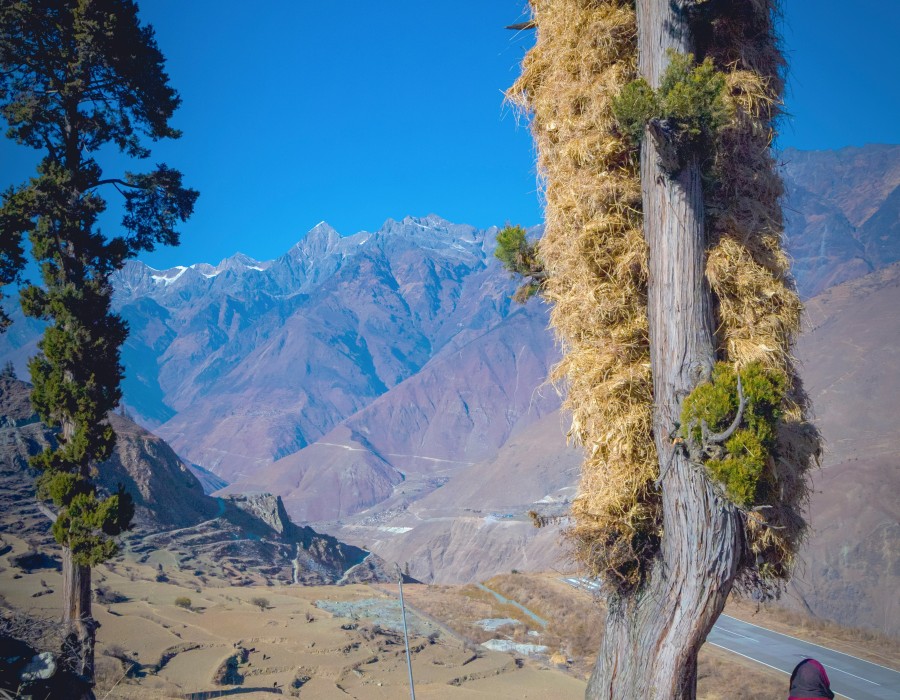Introduction:
The Lower Dolpo Trek is an expedition into one of Nepal's most remote and culturally rich regions, nestled between the Dhaulagiri and Tibet border. Known for its stark, beautiful landscapes, ancient Bon and Buddhist monasteries, and a way of life that seems untouched by modern times, Lower Dolpo offers an adventure that is both challenging and profoundly rewarding. Here’s an updated guide for planning your trek in 2025.
Why Lower Dolpo?
Unspoiled scenery: From the rocky, desolate high mountains to the turquoise Phoksundo Lake, Lower Dolpo boasts some of Nepal's most unspoiled scenery.
Cultural Immersion: Trekkers can get a unique look at traditional ways of living in the area, which is home to Tibetan-influenced cultures, such as the Bon religion.
Wildlife: The hike goes through Shey Phoksundo National Park, where you may see Himalayan tahr, blue sheep, and snow leopards.
Seclusion: Lower Dolpo offers a genuine, isolated experience because fewer hikers visit it than other walking routes.
Trekking Route and Itinerary:
Starting Point: Flights from Kathmandu to Nepalgunj and then to Juphal, the entry point to Dolpo, mark the start of the trek.
Daily Guide:
Day 1: Get to Kathmandu and get ready for the hike.
Day 2: Take a plane to Juphal from Nepalgunj. Travel to Dunai.
Day 3: Follow the Bheri River as you trek from Dunai to Tarakot.
Days 4-5: Proceed to Laini and Nawarpani, where you may witness the change from wooded to rougher landscapes.
Day 6-7: Trek to Do Tarap, a major Dolpo cultural center, which allows for a day of exploration and acclimatization.
Days 8 to 10: climb to Numa La Base Camp, traverse Numa La Pass (5,309m), and continue on to Baga La Pass (5,169m), which offers stunning views.
Day 11: Head down to Ringmo, which is close to the breathtaking Phoksundo Lake.
Day 12–13: Take in the surroundings, explore Phoksundo Lake, and pay a visit to the Bon monastery.
Day 14–16: Trek back to Juphal using well-known routes, but there may be some detours.
Day 17: Take a plane to Kathmandu from Juphal via Nepalgunj.
Challenge and Preparation:
Difficulty: Due to high passes, isolated locations with few amenities, and the requirement for physical stamina, the difficulty level is categorized as moderate to tough.
Physical fitness: Hikers should be in top physical condition, and prior high-altitude trekking experience is advantageous.
Altitude: Acclimatization is essential because the passes reach elevations of over 5,000 meters. Anticipate the symptoms of altitude sickness.
Equipment: Bring thick clothes, a sturdy sleeping bag, sturdy boots, and camping equipment if you won't be staying at teahouses.
Ideal Time to Go Trekking:
The best seasons are spring (March to May) and fall (September to November) because of the pleasant temperatures and clear skies.
Heavy rainfall during the monsoon season (June to August) makes routes slick and increases leech activity.
Although fewer hikers go here in the winter (December to February), when there is a chance of snow at the passes, the views can be breathtaking.
Environmental and Cultural Aspects:
Local customs: Respect the Bon and Buddhist traditions, take part in local celebrations if you can, and educate yourself about their way of life.
Conservation: Lower Dolpo is a delicate ecological area; trek responsibly by controlling trash and showing consideration for wildlife.
Accommodation:
Camping: Although certain settlements, such Do Tarap and Ringmo, provide simple lodging, camping is frequently required due to the remoteness.
Conclusion:
The Lower Dolpo Trek in 2025 offers an escape to a world where ancient traditions and untouched nature converge. It's a journey that challenges the body but enriches the soul, providing trekkers with a rare glimpse into a region that time seems to have forgotten. With proper preparation, respect for the environment, and an adventurous heart, Lower Dolpo can be one of the most memorable treks of a lifetime. Remember, the trek is as much about the journey through the landscapes as it is through the cultural tapestry of Dolpo.





Comments